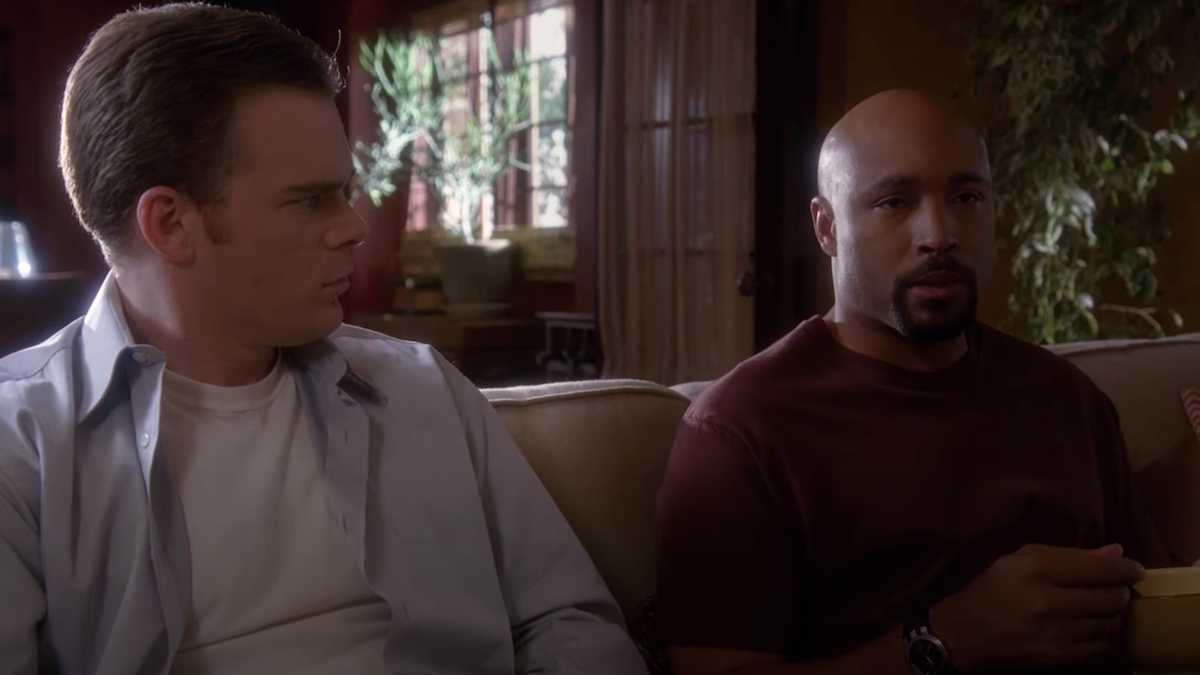
Six Feet Under probably doesn’t come to most people’s minds when discussing HBO’s best series because it doesn’t have a controversial, overarching subject matter.
The Sopranos remains appealing to new viewers mainly due to its mafia backdrop. The Wire catches eyes because cop dramas are a known quantity. With Six Feet Under, however, creator Alan Ball (who also helmed HBO’s queer-coded horror spectacle True Blood) crafted a simple drama about a loving yet chaotic family who runs a funeral home. That doesn’t seem all that exciting to an audience member going in with no prior knowledge. Still, all it should take is a few episodes of the show for that viewer to become instantly obsessed with the raw, authentic characters and real life issues that it expertly depicts.
From death anxiety to coping with chronic illness, the series forces the people on screen and off to face some of life’s greatest hardships with their chins up. It set a new standard for HBO’s programming and gained respect from critics without the need for fire-breathing dragons or borderline pornographic romps.
Six Feet Under’s biggest accomplishment, though, was normalizing same-sex relationships in a way that hadn’t yet been seen in prestige dramas. Middle Fisher child, David (Michael C. Hall) and his longtime romantic partner and eventual husband, Keith Charles (Mathew St. Patrick), certainly weren’t television’s first gay couple. But they were the rare gay characters in the early 2000s to empathetically depict the highs and lows of queer life without exploiting their sexualities for the sake of representation.
Over two decades and hundreds of LGBTQ+-centered shows later, David and Keith remain one of the most honest and authenticating gay couples put to the silver screen. As we enter into Pride Month and the 23rd anniversary of the show’s premiere, it’s a vital time to look at how every queer couple on TV should emulate this revolutionary pair.
David and Keith Embrace and Subvert Heteronormativity
Many people with homophobic or discriminatory views seem to only empathize with gay couples if the relationship is heteronormative – i.e. if a same-sex couple has clearly defined “male” and “female” roles. David and Keith struggle with many of the things straight couples do, from mixing contrasting personalities (David is meek and Keith is aggressive) to deciding whether to live with each other and have children. These problems make the relationship initially palatable to straight, casual viewers because they no longer see David and Keith as gay, but rather just as they would any other romantic pairing.
The irony in this reality is that intolerant people should be able to see that same-sex couples have always battled with “straight people” issues. Six Feet Under wasn’t trying to dilute the gayness of its queer characters but rather ease the viewers into the realities of gay hardship. The writers seamlessly mix “straight” problems with “gay” problems throughout the show’s five seasons.
One of the most heart wrenching cruxes in David and Keith’s partnership is Keith’s strained relationship with his parents, especially his father. Keith’s dad holds many outdated, homophobic opinions that throw a wrench into both Keith’s self-acceptance of being gay and his growth with David. Keith’s dad equates gayness as weakness, fueling Keith’s anger and motivations to live up to the ideal, heteronormative standard of a man in America.
When David tries to stick up for Keith and intervenes with his father-in-law, it leads to Keith explicitly telling his lover that it’s none of his business. The problem of individuals in a relationship trying to decide between their parents and their partner has nothing to do with being gay or straight, but the writers intelligently weave a queer angle into the storyline. Not only is homophobia at the center of the argument, but it spurs Keith’s anger management issues and self-acceptance of his romantic life. In other words, Six Feet Under always introduces a heteronormative problem on the surface and then crosses the rainbow bridge to show how gay couples must tackle unique angles of the same issues straight people do.
There is a brilliant blurring of the gayness and straightness to David and Keith’s life together that makes their love vibrant and relatable to viewers regardless of their own sexualities or views on the politics of same-sex attraction. They share intimate moments like silly dances, but also fiery tirades that lead to passionate amends. The sexual tension and tender advances grapple viewers through the screen, allowing fans inside the minds and emotional states of both men during moments both big and small.
The thorough, lifelike depiction of David and Keith through five seasons of personal, professional, and interfamilial struggles made them the defining couple in the show even over their straight counterparts (such as Nate and Brenda or Ruth and George). Being gay wasn’t David and Keith’s entire persona. Instead, gayness was just one aspect of their lives. This method of crafting queer characters should be more prevalent in 2024. It would make both straight viewers and LGBTQ+ ones feel that they are watching authentic depictions of the gay perspective. David and Keith are instruments for education rather than tokens of a queer quota.
David and Keith’s Incredible Chemistry Elevates Their Romance
No matter what storylines or themes a show tries to convey through writing, the plot only resonates with the audience if the actors can portray the characters with integrity and ingenuity. Michael C. Hall and Mathew St. Patrick deserve heaps of praise for depicting David and Keith’s up-and-down journey with realism and comfortability.
Many older shows with LGBTQ+ couples falter because the actors clearly show reservations during intimate scenes. The Sopranos tried a gay plotline with Vito Spatafore (Joseph R. Gannascoli) that did more to reverse gay rights on TV than advance them. Gannascoli awkwardly faltered through the kissing and cuddly scenes with his scene partner during the sixth season plotline, although some could argue that this was intentional due to Vito’s own non-comfortability with same-sex attraction. I don’t believe the show should get this benefit of the doubt, though.
David was closeted and possessed plenty of internalized homophobia in season one of Six Feet Under, but Michael C. Hall always portrayed the character’s intimate side with realistic mannerisms and attributes. The passionate part of the relationship revolutionized the way TV shows would eventually throw caution to the wind and depict bedroom scenes with same-sex couples the same ways they would straight ones.
The show never felt like they were screaming, “Look! Gay people are making out! Isn’t this great!?!?” Instead, it was a natural progression of LGBTQ+ romance that should have been okay for people to watch decades before the 2000s, but progress sometimes comes in small steps, right?
Six Feet Under’s Enduring Impact
Six Feet Under received a lot of critical adulation from queer fans during its run (such as three GLAAD Outstanding Drama Series Awards), but it doesn’t feel like it gets mentioned in the breath of shows like Queer as Folk or The L Word. While both of those shows were vital to the progression of LGBTQ+ art on television, Six Feet Under had the ability to reach a broader audience because it featured so many straight characters, too.
It displayed some forms of homonormativity while also shattering the stereotypes straight people had about gay marriages, such as those enjoyed by David and Keith. Heterosexual audiences could better sympathize with David and Keith because they were fathers, husbands, and sons first and gay people second.
While most people think of Six Feet Under as the show about death, David and Keith were just one example of the endless optimism the series leaned into. Alan Ball may have enjoyed prescribing a heavy dose of dark humor for five seasons, but it only felt so poignant because of the love and joy the Fishers ingrained into living rooms. Six Feet Under was actually way more about living than dying, and David and Keith were a sign of the possibilities of a life well lived.
The post Six Feet Under’s David and Keith Revolutionized LGBTQ+ TV Couples Without Even Trying appeared first on Den of Geek.





